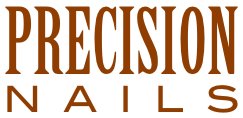“Nowadays, people know the price of everything and the value of nothing.”
Oscar Wilde
Spend any time in the beauty industry and you’ll soon recognize the first words of most potential clients: “How much is a (insert name of service here)?” Like most nail professionals, you instinctively answer with the price. But no matter what that number, the answer will be wrong. Why? Because without context, a mere number is essentially meaningless. It assumes that all services are created and delivered equally from salon to salon, and it cannot possibly capture the nature and quality of your service. Clients cannot appreciate the value of your work when they don’t understand what they’re paying for. It’s your responsibility to communicate that value.
Whether just starting your salon business, or reinventing an existing one, the decisions to be made can be overwhelming. One of the most important is how to structure and price your services. Overpricing will discourage potential clients initially, while underpricing will discourage you eventually. The only thing more frustrating than clients taking advantage is the realization that it’s your fault. Ideally, your service prices will strike just the right balance between being competitive (attractive to potential clients) and
providing adequate compensation (enabling you to earn a living doing what you love . . . nails!).
Important decisions related to service pricing require doing your research, but not the kind that you might expect. How many times have you been advised to contact other salons and ask about their pricing to determine your own? That’s just as useless as when a potential client asks the same question. If you want to make the common and misguided mistake of competing on price, then contact other salons. But what’s the point unless you also find out what their salon costs are? Few salon owners would be
willing to share that information, even if they knew.
Doing your research means accounting for your own costs:
- Lease
- Equipment and supplies
- Utilities (telephone, water, gas and electric, etc.)
- Outside/professional services (payroll, accounting, laundry, etc.)
- Licenses (business and professional)
- Insurance
- Taxes (payroll, sales, property, etc.)
- Marketing/advertising
- Education
- Professional memberships
- Payroll, or your time if you work independently
These costs vary so widely from salon to salon that it’s imperative that you do this for yourself, and make every effort to reduce these costs whenever possible.
Even with this information, you’re not prepared to make good decisions. Considering that income generated from nail services depends on the active participation of service providers, time must be accounted for before pricing can be determined. The time required to complete the service should be minimized as much as possible to avoid wasting your time or your client’s. To maximize time (your greatest resource!), your services need to be structured deliberately to achieve the desired results: the
procedures organized step-by-step and the products and tools selected for each step. Every procedure, product and tool should be evaluated for its safety, efficiency and cost-efficiency.
For every service, you need to calculate the product cost, including both disposables (files, gloves, nail wipes, etc.) and consumables (polish, lotion, acetone, gel, etc.). Once calculated, that number. along with the time required to complete the service can be used in the following formula:
Product Cost + $1/minute = Service Price (Round up to the nearest $5 increment.)
For example, our pedicure costs $3 in product and takes 45 minutes. Our service price is $3 + $45 = $48, but rounded up to $50. The product cost percentage is $3/$50 = 6%. Ideally, the product cost should be lower than 10%; otherwise, that service may not be worth offering.
Before you question the feasibility of earning at least a $1/minute, let’s discuss. For nail professionals who believe that clients in their particular area won’t pay $1/minute, ask yourself what the standard hourly rate is for massage. Given your diverse skills and significant investment in education, equipment and supplies, your work should be worth at least the equivalent of that of a massage therapist. And for nail professionals who don’t think they can charge $90 for a pink and white backfill just because it takes 90 minutes, they’re right. What’s taking so long? Every service offered should be doable in an hour or less. Developing your skills and being more efficient will reduce the time required and move you closer to that $1/minute minimum.
To market your services, publish enticing service descriptions that detail what’s included, the time allowed and the price. Your salon policies (appointments, cancellations, payment options, etc.) also need to be explained in writing. Despite the accessibility of the internet, salons still need something tangible to present to potential clients, so a brochure is a must. When asked about your service prices, whether in person, by email or phone call, be prepared to ask some questions to determine which service, if any, best meets the client’s needs and to focus on its value, not the price.
By Jaime Schrabeck, Ph.D.





No comments:
Post a Comment